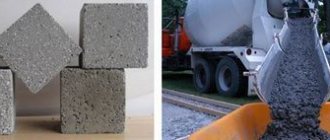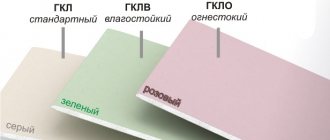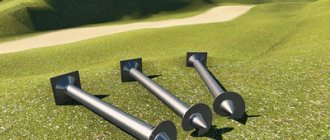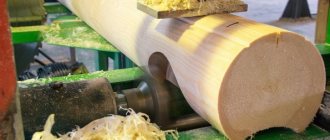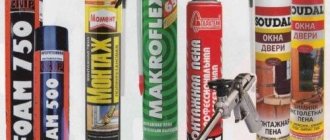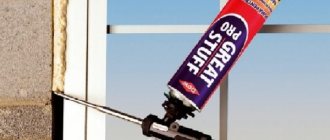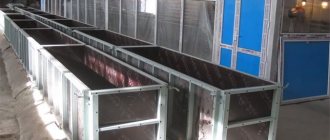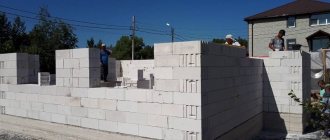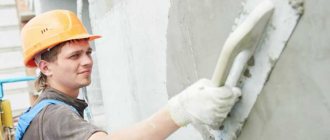The modern construction market offers a huge range of different materials, mixtures, and fittings intended for construction and repair. But no repair is complete without sheet materials that are used for finishing, and there are a great many of them. GVLV sheets are especially recognized as environmentally friendly and breathable. Their scope of application is significant. They cover walls and floors, make protective structures, use them as decorative finishing, and are allowed for renovation of premises in children's and medical institutions.
GVLV sheets are especially popular in repairs
What it is?
GVLV is a finishing sheet material, it is a rectangle. It is made on the basis of gypsum and contains cellulose for strengthening (reinforcement) and many additives. That is why gypsum fiber sheet is stronger than plasterboard, and thanks to additional additives, GVLV has increased moisture resistance and fire resistance. The material is environmentally friendly - this is its main advantage. It is divided into two types - simple GVL and moisture-resistant (GVLV). In terms of structure, gypsum fiber differs from gypsum plasterboard in that it does not have cardboard as an outer shell. During its manufacture, cellulose fibers are added and monolithic sheets are pressed. These fibers add reinforcing properties to the material, making it strong and durable. GVLV has increased sound and heat insulation.
Such sheets are moisture resistant and have a sound insulation function.
GVL and gypsum plasterboard: properties and comparison
So far there is no noticeable difference between GVL and GKL. Both are sheet materials that can be used to cover walls and ceilings. Only gypsum fiber is suitable for flooring, but plasterboard is not. This is just the beginning. Let's understand further.
You don’t have to choose: GVL or gypsum board, but use them together
Density, strength
If we compare gypsum fiber board and gypsum plasterboard, then gypsum fiber has a higher density and, accordingly, with the same thickness, greater strength and weight. Greater strength - it seems to be good. In any case, the GVL is not so easy to penetrate with a blow. Another plus is that you can safely hang shelves on a frame wall covered with gypsum fiber board.
Not every screw can be screwed into gypsum plasterboard without first drilling holes.
On the other hand, higher density means installation is more difficult. Not every self-tapping screw can be screwed into a gypsum fiber board without pre-made holes. You can do without drilling, but only if you use self-tapping screws and a powerful screwdriver. Moreover, without preliminary countersinking (drilling a hole of a larger diameter), it will not be possible to “drown” the cap into the gypsum fiber. When sheathing gypsum fiber board in two layers without pre-drilling holes, it may happen that the screw screwed into the second sheet “tries” to press out the bottom one.
Drywall has less strength and can be punched through with a punch. But ordinary self-tapping screws easily fit into it. When installing gypsum boards, the most important thing is not to overtighten or tear the cardboard with the screw head. Otherwise, it falls into the gypsum layer, which bursts. You have to turn it somewhere else. If you mess up like this several times in a row, you will have to change the sheet, as it simply won’t stick.
Permissible long-term loads on fasteners installed in gypsum boards
And, by the way, on a wall sheathed in one sheet of gypsum fiber board, a properly installed special dowel (butterfly or also called daisy) can withstand a weight of 80 kg for a long time. The question is that technology must be followed.
Weight of gypsum board and gypsum board
Now let’s talk about why high density is bad. The first disadvantage has already been described: it is more difficult to install fasteners. The second is that greater density means greater mass. That is, to install GVL under the same conditions, a more powerful frame is required. When transporting, you will have to take into account the tonnage; heavy sheets are more difficult to work with. The weight of one sheet of gypsum fiber board is tens of kilograms. For example, Knauf gypsum fiber boards have the following parameters:
- a sheet measuring 2500*1200*10 mm weighs about 36 kg;
- GVL 2500*1200*12.5 mm has a mass of 42 kg;
- a floor element 1550*550*20 mm has a mass of about 18 kg.
Plasterboard sheets are much lighter (see table).
Weight of drywall depending on size, thickness, type
If we talk about the mass of a square meter of gypsum fiber sheet, it can be calculated using the formula:
- The mass of a GVL square cannot be less than 1.08*S,
- but cannot be more than 1.25*S.
Where S is the nominal sheet thickness in millimeters. So the range of values is quite easy to determine. However, for some reason, manufacturers do not indicate the weight of one sheet. This data can only be found from Knauf. According to their information, the picture looks something like this:
- GVL thickness 10 mm - 12 kg/m²;
- GVL thickness 12.5 mm - 14 kg/m²;
- EP thickness 20 mm - 21.5 kg/m².
When compared with the average weight of gypsum boards, fiber gypsum boards are 3.5-4 times heavier. Lifting even one sheet alone is already a problem. Even if you figure out how to do it without breaking it. Naturally, they need to be mounted on a more powerful base.
Flexibility and fragility
Drywall, due to the fact that the gypsum is between two layers of cardboard, is more flexible. Cardboard performs the task of reinforcement, taking a significant part of the load on itself. Especially under bending loads. For example, a sheet of plasterboard can be lifted from one side by grasping the short side. It will bend, but will not crack. If you try to carry out the same operation with a gypsum fiber sheet, it will crack.
They are easy to distinguish externally, but deciding which one is better is not so easy.
Another advantage of gypsum board is that it can be used to finish curved surfaces. There are several technologies that make it possible to make arches, columns, and smoothly curved reliefs on walls and ceilings. GVL does not provide such an opportunity. It takes bending loads very poorly both along and across the sheet: the cellulose fibers are very short and the board simply breaks. So if you need to finish bent surfaces, the choice between gypsum fiber board or gypsum board is easy to make in favor of the second.
Sound insulation and thermal conductivity
When choosing a material for cladding, indicators such as thermal conductivity and sound insulation are important. As is known, they depend on the density, since GOSTs allow a fairly wide range in the density of gypsum fiber boards; these characteristics must be looked at for each specific manufacturer. To give you at least a rough idea, there is the following data:
- Thermal conductivity GVL with a density from 1000 kg/m3 to 1200 kg/m3 has a thermal conductivity from 0.22 W/m °C to 0.36 W/m °C.
- The thermal conductivity of gypsum plasterboard is approximately in the same range - from 0.21 to 0.34 W/(m×K).
Main technical characteristics of GVL
If we talk about sound insulation, the same picture is observed: the characteristics are approximately equal. GVL provides only 2 dB better protection compared to gypsum plasterboard. It is also worth remembering that you can find acoustic drywall if you wish. It has special characteristics and is used for covering shops, concert halls, and studios. If we talk about private housing construction, it should be used in bedrooms.
What is quieter: GKL or GVL
If you look at the characteristics, there is no difference in sound insulation between gypsum plasterboard and gypsum fiber board. But this parameter takes into account the “conduction” of sound. There really isn't much difference here. That's how it feels. And significant. A room lined with gypsum fiber boards is much quieter. It's not as loud. Sounds are reflected from smooth cardboard, but “get stuck” in the non-uniform surface of fiber boards. So if silence in your home is important to you, when choosing between gypsum fiber board and gypsum board, opt for gypsum fiber.
Specifications
A material such as gypsum fiber sheet can easily be hammered with nails and screws - it will not crumble, its strength is 1250 kg/m³. During production, it is treated with anti-chalking agents and sanded, which makes it moisture resistant. GVLV is hygroscopic, which means that it can absorb excess moisture and release it if the air is dry enough, but treating with a primer will not hurt.
This sheet is very strong; if you hammer a nail into it, it will not crumble.
The material is frost-resistant and resistant to deflection. Any tool designed for woodworking is suitable for it. Fireproof, has sound and heat insulation. The mass of the slabs is 39-43 kg, making the load on the main wall insignificant.
Such sheets are very strong and are not afraid of low temperatures
Advantages and disadvantages
Let's see what advantages gypsum fiber sheet has:
- Due to the equal distribution of cellulose, the material, in comparison with gypsum board, is very strong.
- GVLV sheets are fireproof; they do not burn in a fire, unlike plasterboard, the sheets of which crumble when the outer layers burn.
- Installation does not cause any difficulties.
- Gypsum fiber is used in any room, as it has excellent moisture resistance.
- Does not allow excess noise to enter the apartment.
- The material is so durable that it will not crumble if nails are driven into it and screws are screwed in; you can use ordinary tools to work with it.
- Can withstand significant sub-zero temperatures (freezing and thawing are 15 cycles, while drywall can only withstand 4 cycles).
- It harmonizes perfectly with various finishing materials.
Such sheets have a lot of advantages.
Of course, gypsum fiber has a lot of advantages, now let’s look at its disadvantages.
- In terms of weight, GVLV sheets are much heavier than drywall, as they are denser.
- High price equivalent.
- They cannot be used for structures where it is necessary to bend the material, because gypsum fiber is not flexible.
GVLV sheets are easy to install
Types of lathing: wood or metal profile
The lathing for gypsum fiber boards can be made of wooden or metal profiles.
Profile elements for lathing under gypsum fiber boards
Creating a sheathing allows you to lay layers of heat and sound insulation inside the sheathing or partition. The sheathing also corrects uneven foundations and hides wiring and water pipes.
Wooden sheathing - made from coniferous timber; the wood must be prepared accordingly. Before installation, lumber is coated with fire retardants and antiseptics. However, wooden sheathing is still not recommended for use in places that are exposed to moisture. Also, wood does not have high fire-resistant properties even after treatment with fire retardants, so in rooms with high fire protection requirements it is recommended to use a frame made of steel profiles.
The wooden block should have a moisture content of 12 - 20%
Metal sheathing is easy to assemble, does not shrink, and is not susceptible to rotting. Strength depends on the thickness of the metal; profiles with a steel thickness of 75 and 100 mm are considered the most reliable. Depending on the location, different types of profiles are used: guide profile (NP), ceiling profile (PP), rack profile (SP).
Profiles and fasteners
Scope of application of gypsum fiber
Gypsum fiber sheets can be used almost everywhere: to finish surfaces, build interior partitions and walls. If you are going to do renovations in the kitchen, bathroom or shower room, it is better to take moisture-resistant GVL - GVLV. Because the material has fire-fighting properties, it is used for load-bearing structures, and cable channels can be laid behind it. It is especially suitable for those premises where fire safety rules must be strictly observed.
GVLV sheets can be used for any purpose
The fact that gypsum fiber is an environmentally friendly material, without any risk to health, it can be used for children's rooms, bedrooms, laid on the floor, and finished on the ceiling. Suitable material as a rough floor covering and as an element of a dry screed. This method is very important when you need to equip the floor in a short time.
Gypsum fiber is an environmentally friendly material
Types of GVLV and marking
Gypsum fiber has one main difference - size. But it may also differ in the shape of the edge. That is why they are divided into two types.
| Having a straight edge (PC). | This type is suitable for laying floors. |
| Having a rebated edge (FC). | They are used in cladding walls and ceilings, in the construction of partitions and piers. |
Sheets are divided into two types: PC and FC.
You can distinguish which border the material has by its appearance, the remaining data is indicated in the form of markings and applied to the reverse side. How can you understand what is indicated there? First, they print what type of gypsum fiber is - simply GVL or moisture-resistant GVLV. Then the production accuracy is indicated, as well as the type group (“A” or “B”). Here you can immediately understand that gypsum fiber of group “A” is more accurate. Then indicate the type of edge (FC or PC), sheet size, and its standard.
You can distinguish between types of sheets by markings and material.
Here is one example of marking: GVL-A-PK-2500x1200x10 TU 5742-004-03515377-97. This means that this is ordinary gypsum fiber for the floor and belongs to the first accuracy group. Its size is 2500x1200 mm, sheet thickness is 10 mm. Another sample: GVLV-B-FK-3000x1000x15 TU 5742-004-03515377-97. This means that this GVL is moisture-resistant for walls and belongs to the second accuracy group. Its size is 3000x1000 mm, sheet thickness is 15 mm.
The sheet size is indicated in the marking
Frameless installation of gypsum fiber boards
Frameless installation of gypsum fiber boards is used less frequently, although this method is not bad. You don't need a frame, but you will need special glue. Installation is carried out as follows:
- When the recesses are up to 4 mm deep, the sheets are immediately glued to the surface with gypsum putty. This is the so-called gypsum glue. It is applied to the sheet in thin longitudinal strips around the perimeter, and then tightly applied to the wall.
GVL glue is used. In some cases, PVA glue is used, although this option is more suitable for floors.
- If there are more irregularities on the wall (up to 2 cm), glue is used. It is spread around the perimeter and in the center of the slab with dots every 30-35 cm. When you plan to attach shelves, cabinets or other furniture to the wall, the glue is applied to the entire surface of the slab.
- If the wall is completely uneven (unevenness from 2 to 4 cm), then strips up to 10 cm wide are first glued to it, and then solid slabs are attached to them with gypsum putty. Installation on the walls is carried out before finishing the floor. The air temperature in the room should not exceed +10 degrees. Before starting work, the sheets should be kept at room temperature for 2-3 days.
For wet rooms, moisture-resistant gypsum fiber is used.
Before starting work, the walls are cleaned of weak old coating. If required, it is strengthened with a primer and puttied. Installation of the slabs begins after drying. First, the verticality of the wall is checked with a level and the places where the slabs will be installed are marked.
Frameless method of installing gypsum fiber boards.
Cutouts for switches and sockets are prepared in gypsum board slabs cut according to the markings. The height of the GVL should provide gaps in the lower part of approximately 8-12 mm. They will be closed in sections after the main slabs are installed. For greater reliability, the plates are tightened with self-tapping screws.
Putty and glue are applied with a notched calibrating spatula. The level is controlled by a tensioned thread. Leveling the slabs is done with a mallet directly on the wall.
Plates are placed along the perimeter of the wall, starting from its corner. For cladding wooden walls, self-tapping screws or roofing felt nails are additionally used.
How to choose the right high-quality gypsum fiber sheets for walls and floors
Before buying GVL, you must decide what its purpose is. If you are screeding, purchase sheets of a smaller size - 1.5 x 1 m, the thickness of which is 10 mm. Sheets with a thickness of 12 mm and a length of 1.2 m may also be on sale. The flooring is carried out in several layers, this must be taken into account before you go to the store. It is important to decide which sheets you will need - moisture-resistant or regular.
Before buying GVL, you must decide what its purpose is.
When choosing gypsum fiber, it is very important what you use as a thermal insulator. Be sure to look at the markings - they are indicated on the back of the sheet. Ask your sales representative for a quality certificate and what the storage conditions are. The plane must be without flaws. With sufficient ventilation, gypsum fiber sheets, which weigh approximately 42 kg, are laid on a concrete screed, only their size should be medium. Sheets weighing 40 kg can be laid on a reinforced concrete or wooden surface.
This material has some advantages, so it is preferable to use it
From all of the above, we can conclude that gypsum fiber is the latest modern and improved building material, which has some advantages. In demand for repair and construction work.
